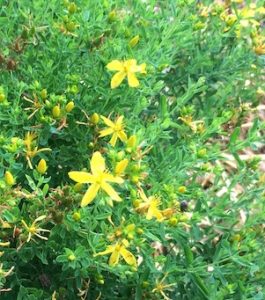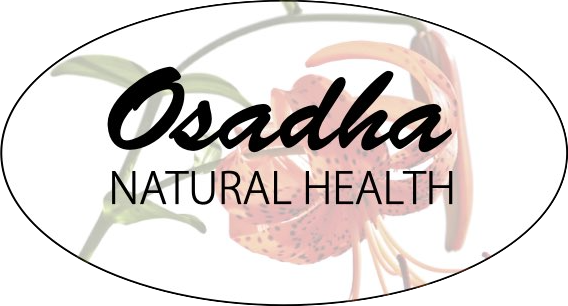Fall is approaching. Here in Durango and the surrounding mountains, the leaves are already changing and the nights are chilly. On one hand, fall is my favorite season. The colors and smells, the crispness in the air, apple cider and pumpkins (just not “pumpkin spice” anything, please). I look forward to the palpable change in energy and the shifting inwards, feeling more connected to things obscure. But, my mood takes a noticeable downturn some time in mid-to-late August as the days grow noticeably shorter. Many of us in temperate regions go through this with the funk kicking in as the dark months approach.
nights are chilly. On one hand, fall is my favorite season. The colors and smells, the crispness in the air, apple cider and pumpkins (just not “pumpkin spice” anything, please). I look forward to the palpable change in energy and the shifting inwards, feeling more connected to things obscure. But, my mood takes a noticeable downturn some time in mid-to-late August as the days grow noticeably shorter. Many of us in temperate regions go through this with the funk kicking in as the dark months approach.
Medicinal plants have a lot to offer in the context of a larger plan for support. Here are several good plant allies to help with seasonal blues and the stress of the upcoming holiday season.
St. John’s Wort
This is a great multi-purpose herb that is helpful when the light starts going away. In fact, I just started myself on it a few days ago in preparation. It can also be helpful for those struggling with situational depression (for example, just getting your heart broken…something that I’m also working with!). The bright yellow flowers are symbolic of the light that can help us with the autumn and winter months.
St. John’s Wort is best as a tincture made from fresh or recently dried plant. I avoid commercial capsules as they may be of dubious quality depending on the brand. If the herb has been recently dried, then it will also work as a tea. Avoid standardized extracts. St. John’s Wort isn’t a pharm drug, and the idea of standardizing it to one “active ingredient” doesn’t make sense when it has multiple active constituents.
Don’t combine St. John’s Wort with prescription antidepressants. Also, don’t combine with other medications unless you are confident that you understand the metabolism of the medication. St. John’s Wort influences the activity of a liver enzyme (CYP3A4) that is responsible for metabolizing about half of all prescription drugs. This means that taking St. John’s Wort together with medications that are metabolized by this enzyme can effectively change serum levels of that med. Not a great idea.
Lemon Balm
Lemon Balm makes a delicious tea, and you can do a little aromatherapy as well with the lovely lemony scent as you’re sipping the tea. Tincture works well, too, but the tea is so lovely, it’s my preferred form. Lemon Balm and St. John’s Wort pair well for the seasonal blues, though Lemon Balm is just fine by itself, too. My teacher calls it “liquid sunshine”, and it’s a good plant for bringing you back when your mood is spiraling into a dark place. Lemon Balm is calming as well, which is helpful for those of us lucky enough to get both the blues together with nervousness!
Lemon Balm is fine for most people but shouldn’t be used regularly by folks with hypothyroidism.
Damiana
An aphrodisiac?? Well, yes, for some folks, but my favorite uses for daminana are for it’s mood enhancing effects and for respiratory infection (more on this second one in a future article). Damiana is a bit stimulating, though you won’t notice if you’re a black tea, coffee or energy drink consumer. Damiana is also warmer than the prior two herbs and is good for folks who tend to feel sluggish and cold.
A popular way to use Damiana is as a cordial, especially mixed with such delectables as chocolate and vanilla. Stay tuned, as next week’s article will be on cordial making! A tincture is fine, and damiana also works as a tea, but the taste is pretty funky unless blended with other herbs.
My favorite way to use Damiana is to smoke it. Yes the particulates aren’t fantastic for the lungs, but it’s a tasty and happy and relaxing smoke. Even when too low to feel the happy part, it’s still comforting. More is not necessarily better when smoking it, and myself and a friend have each developed headaches with too many puffs. In this case, mixing damiana it with other supportive herbs would be a good idea (more on this in an upcoming smoking blends article).
Tulsi
Tulsi is a valued tonic that comes out of Ayurvedic medicine. Among other activities, tulsi improves cerebral circulation, helping with mind fog and mood. And, it has some adaptogenic properties that reduce stress hormone (cortisol) levels. This is helpful for those of us who have a hard time dealing with the stress of the holidays. Tulsi is also a good one for those of us who isolate, especially during the dark months. On top of helping with low moods, tulsi is useful for anxious states as well. This incredibly useful plant also supports immune system function, not a bad idea given that cold and flu season is also coming.
For this or any other of the herbs here, consider starting with just a drop or two and quietly Some folks may find tulsi a bit stimulating, so maybe not the best one to use at night. Also, tulsi may have anti-fertility effects, so I don’t recommend regular intake for folks trying to conceive. notice the energetics. For instance, drop doses of tulsi can be noticeably uplifting, even for folks with stubborn, hard to dispel melancholy.
Make your own chai!
Warming herbs in general can help motivate and uplift folks with low energy, especially during the cold months of the year. Why not make your own chai? Think cardamom, ginger, black pepper, cinnamon, and clove. Many of these are considered “heart exhilarants” in the ancient tradition of Unani medicine. Orange peel is a lovely addition for it’s aroma and pleasantly bitter flavor, though it’s cooling. I try to minimize caffeine and thus use rooibos or decaffeinated black tea as the base. The former will be sweeter, the latter more bitter.
Add calendula to any of the herbs in this article for it’s beautiful orange, sunny energetics, or rose petals for folks heading into the dark months already dealing with chronic or situational depression.
~~~
Content © Dr. Anna Marija Helt, Osadha Natural Health, LLC. Permission to republish any of the articles or videos in full or in part online or in print must be granted by the author in writing.
The articles and videos on this website for educational purposes only & have not been evaluated by the Food and Drug Administration. This information is not intended to diagnose, treat, cure, or prevent any disease or to substitute for advice from a licensed healthcare provider.
